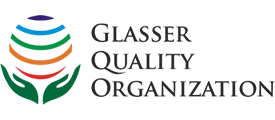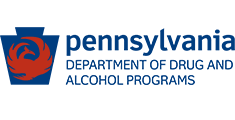The signs, symptoms, and effects of schizoaffective disorder can be different for every person impacted. Learning about schizoaffective disorder is one of the first steps towards getting better.
Understanding Schizoaffective Disorder
Learn about schizoaffective disorder
Schizoaffective disorder is a serious mental health condition that is characterized by co-occurring psychotic and mood symptoms. Individuals who struggle with schizoaffective disorder will experience symptoms of schizophrenia, such as hallucinations, delusions, disorganized speech, grossly disorganized or catatonic behavior, and diminished emotional expression or avolition, as well as manic or major depressive episodes.
Schizoaffective disorder is characterized by an uninterrupted period during which the afflicted individual continues to display active or residual symptoms of psychotic illness. Criteria for a diagnosis of schizoaffective disorder include the following:
- Uninterrupted period during which the individual experiences a major depressive episode or manic episode
- Experiencing hallucinations or delusions for two or more weeks in the absence of a major depressive episode or manic episode
- Experiencing symptoms that meet criteria for a major mood episode during the majority of the duration of the active and residual portions of the illness
- These disturbances cannot be attributed to substance abuse or the presence of another mental health disorder
The onset of schizoaffective disorder can occur at any time from adolescence through older adulthood, but it most commonly occurs during early adulthood. This disorder can significantly impair an individual’s efforts to meet personal, academic, occupational, and social responsibilities or otherwise participate in a healthy and productive life. However, with effective professional treatment, individuals who struggle with schizoaffective disorder may be able to manage their symptoms and live a healthier and happier life.
Statistics
Schizoaffective disorder statistics
According to the American Psychiatric Association (APA), the lifetime prevalence of schizoaffective disorder is about 0.3%. The APA also reports that schizoaffective disorder is diagnosed in women more commonly than it is in men. The National Alliance on Mental Illness (NAMI) reports that men often experience symptoms of schizoaffective disorder at an earlier age than women do. Additionally, the lifetime risk of suicide is about 5% among individuals who have schizoaffective disorder.
Causes and Risk Factors
Causes and risk factors for schizoaffective disorder
The likelihood that an individual will develop schizoaffective disorder may be influenced by a variety of causes and risk factors, including the following:
Genetic: The APA reports that there may be an increased risk of schizoaffective disorder among individuals who have a parent or sibling who has schizophrenia. Individuals whose parents or siblings have developed bipolar disorder or schizoaffective disorder may also be at an increased risk for developing schizoaffective disorder.
Risk Factors:
- Gender (schizoaffective disorder is more common among women)
- Age (the onset of schizoaffective disorder most commonly occurs in young adulthood)
- Family presence of bipolar disorder, schizoaffective disorder, or schizophrenia
Signs and Symptoms
Signs and symptoms of schizoaffective disorder
Individuals who have developed schizoaffective disorder will experience symptoms of schizophrenia as well as symptoms of major depressive episodes or manic episodes. The following are examples of these various categories of symptoms:
Schizophrenia symptoms:
- Disorganized speech and behaviors
- Hallucinations or delusions
- Disorganized or catatonic behavior
- Disorganized speech patterns
- Inability to express thoughts
- Failure to attend to personal hygiene
- Memory problems
Major depressive symptoms:
- Profound sadness
- Disinterest in significant activities
- Unintentional weight gain or weight loss
- Insomnia or hypersomnia
- Psychomotor agitation or retardation
- Fatigue or loss of energy
- Feelings of worthlessness
- Diminished ability to focus, concentrate, think clearly, or make decisions
- Recurrent thoughts of death
Manic symptoms:
- Inflated self-esteem
- Decreased need for sleep
- Talkativeness
- Racing thoughts
- Easily distracted
- Increased activity
Effects
Effects of schizoaffective disorder
Schizoaffective disorder can significantly undermine an individual’s attempts to live a productive and satisfying life, and can lead to a host of negative outcomes, including the following:
- Increased risk for medical problems
- Substance abuse and substance use disorders
- Poor performance in school or at work
- Job loss and chronic unemployment
- Inability to maintain healthy interpersonal relationships
- Family discord
- Engaging in dangerous, reckless, and risky behaviors
- Withdrawal and isolation
- Self-harm
- Suicidal ideation
- Suicide attempts
- Early death
Co-Occurring Disorders
Schizoaffective disorder and co-occurring disorders
Individuals who experience schizoaffective disorder may be at increased risk for also experiencing the following co-occurring mental health disorders:
- Anxiety disorders
- Substance use disorders







